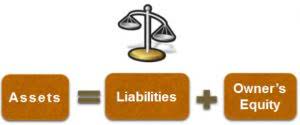The Absorption Costing Method
The Absorption Costing Method
March 17, 2020 Comments Off on The Absorption Costing Method
By factoring in direct labor, material, and overhead costs, organizations can determine the true cost per unit, which is vital for effective pricing strategies and profitability analysis. With a clear understanding of absorption costing, businesses can make informed decisions that contribute to their financial success and gross vs net sustainability. In full absorption costing, fixed overheads pose a unique challenge as they are spread across all units, affecting the cost per unit.

Accounting Jobs of the Future: How Staffing Agencies Can Help Land Them
The key difference in calculating the income statement under absorption costing versus variable costing is in how fixed manufacturing costs are handled. This method of full absorption costing becomes very important is there is the need to follow the accounting principles for external reporting purposes. This not only helps the management in evaluation of the financial condition of the business but also estimate the cost and plan production accordingly. The main idea and intention behind using such a absorption costing method for costing purpose is to imply that a product, when produced, absorbs both fixed and variable cost up to a certain extent. It does not depend on the fact that the unit of the product has been sold or it is still lying in the storage as inventory or finished product ready to be sold. Based on what happens to the product, it will be considered under the inventory calculation or considered under sales revenue and profit calculation.
- Additionally, when there is unsold inventory, absorption costing can result in higher reported profits because fixed overhead costs are deferred into inventory until the products are sold.
- Next, we can use the product cost per unit to create the absorption income statement.
- Absorption costing, also called full costing, is what you are used to under Generally Accepted Accounting Principles.
- Hence, people involved in finance and accounting need to understand its concept in an effective manner.
- In the automobile industry, it is utilized to calculate the total cost of manufacturing vehicles.
What is absorption costing under GAAP?

However, these costs are not included in the calculation of product cost per the AC. Maybe calculating the Production Overhead Cost is the most difficult part of the absorption costing method. The following is the step-by-step calculation and explanation of absorbed overhead in applying to Absorption Costing.
Overhead Absorption Rate Formula
This intricate accounting method delves beyond material and labour, encompassing every high and minor cost to present a holistic view. Direct labor costs are the wages and benefits paid to employees who are directly involved in the production of a product. These are individuals whose efforts can be directly attributed to a specific product’s manufacturing. In this article, we’ll explore the fundamental concept of absorption costing for accounting in manufacturing.

Fixed manufacturing overhead costs are indirect costs and they are absorbed based on the cost driver. This can be a great way to boost your bottom line, but it only works if you can manage to sell all of the units you produce. If you have unsold units, the fixed overhead costs will eventually be transferred to your expense reports, which will eat your profits. So while overproduction can be a great way to cut costs, you must ensure you can sell everything you produce. Under absorption costing, the total manufacturing costs are spread over each widget, irrespective of the number produced.
Methods of Absorption Costing
As 8,000 widgets were sold, the total cost of goods sold is $56,000 ($7 total cost per unit × 8,000 widgets sold). The ending inventory will include $14,000 worth of widgets ($7 total cost per unit × 2,000 widgets still in ending inventory). Overhead absorption costs are all the expenses incurred in manufacturing a product, including fixed and variable costs. These costs are then divided by the number of units produced to calculate the overhead absorption cost per unit.
Apportionment of Fixed Manufacturing Overhead
As you can see, by allocating all manufacturing costs to inventory, absorption costing provides a more comprehensive assessment Legal E-Billing of profitability. Operating expenses are represented on the income statement in the same way under absorption and variable costing. Both fixed and variable operating expenses incurred during the period are recorded.
Direct Labor
It reflects the sales made during the period at the price agreed upon with customers. Both the above methods are accounting techniques that companies use to allocate the cost of production over the total number of units produced. On the other hand, period costs absorption costing formula are not directly related to production as they are accumulated over a set period. These expenses include marketing and office salaries, as well as general administrative expenses.
- However, some argue that absorption costing gives a more accurate picture of the actual cost of a product since it includes all manufacturing costs.
- Absorption costing includes fixed manufacturing overhead costs as part of the product costs, while variable costing only assigns variable manufacturing costs.
- It complies with generally accepted accounting principles and offers a comprehensive approach to determining the actual cost of products.
- This makes it an appealing option for companies looking for a simple way to track and manage production costs.
- Absorption costing is typically used for external reporting purposes, such as calculating the cost of goods sold for financial statements.
- Absorption costing may incentivize overproduction as producing more units reduces the fixed overhead cost per unit, making each unit appear cheaper on financial statements.
Revenue Reporting in Absorption Costing

Absorption costing provides a more accurate, GAAP-compliant method of accounting for all production costs. By including fixed overhead costs in product costs, it presents a fuller, incremental view of profitability. In the aerospace industry, it is applied to calculate the cost of manufacturing aircraft and spacecraft. The direct costs of materials, specialized components, labour, and both variable and fixed overhead costs are allocated to each unit produced.